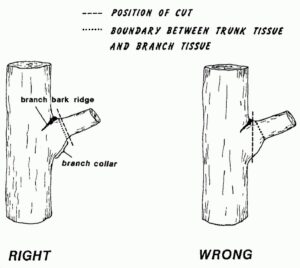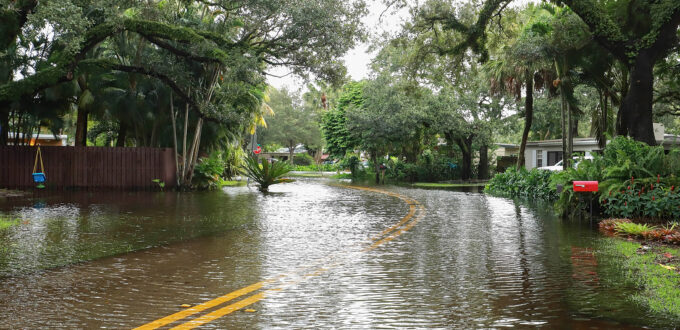In the aftermath of a hurricane, your once-vibrant garden may be left in disarray, but fear not – with dedicated care, you can guide your plants towards recovery. Canterbury Farms Nursery & Garden Center is here to provide you with comprehensive guidance on restoring your garden’s vitality after a hurricane. This article delves into the essential steps of post-hurricane plant care, addresses common issues that arise, and emphasizes the significance of precise trimming techniques for promoting robust growth.
1. Assess the Extent of Damage
As the storm subsides and conditions permit, your first task is to evaluate the extent of the damage inflicted upon your garden. Look out for fallen branches, uprooted plants, and any structural harm. Capturing visual documentation, through photographs, will prove valuable for insurance claims and recovery planning.
2. Debris Removal: Clearing the Way for Recovery
Begin the recovery process by meticulously clearing away debris. Trimming broken or wounded branches and removing fallen leaves not only enhances the visual appeal but also combats the onset of fungal infections and diseases. This pivotal step provides your plants with the space and light needed to rejuvenate.
3. The Art of Pruning: Nurturing New Growth
Pruning stands as a fundamental practice in aiding your garden’s recovery. Pruning not only eliminates compromised portions but also triggers new growth and redirects the plant’s energy. By making precise cuts, you eliminate potential entry points for diseases and encourage the plant to allocate its resources to new, healthy growth. However, understanding where and how to prune is equally crucial. Focus on the following principles:
- – Damaged and Diseased Sections: Trim away damaged, broken, or diseased branches, cutting them back to healthy tissue. Make clean cuts close to the branch collar – the slightly swollen area where the branch meets the trunk.
- – Overcrowded Areas: Thin out overcrowded branches to improve air circulation and light penetration, which fosters better overall plant health.
-

Image by UF/IFAS
– 45-Degree Angle Cuts: When pruning larger branches, execute a 45-degree angle cut just above a healthy bud or lateral branch. This angled cut helps minimize the risk of water accumulation on the cut surface, preventing disease and promoting faster healing.
- – Branch Collar Preservation: The branch collar, a bulge where a branch attaches to the main stem, contains specialized cells that aid in healing. By maintaining this collar during pruning, you facilitate the plant’s natural healing process.
4. Time and Patience: Key Ingredients for Recovery
After your expert pruning, provide your garden time to recover and regenerate. Remember that plants possess remarkable resilience and, with your care, will soon exhibit signs of rejuvenation.
Common Post-Hurricane Issues: Recognize and Address
1. Fungal Infections: Excessive moisture can invite fungal infections. Keep an eye out for discolored or spotted leaves and promptly treat with suitable fungicides. Adequate spacing between plants aids in preventing fungal growth.
2. Soil Saturation: Overly wet soil may lead to root rot. There’s not a lot that you can do to control the moisture in the soil after a storm. Luckily, our naturally sandy Florida soil usually drains quickly. However, many newer subdivisions in our area have amended soil foundations that can cause drainage issues that are difficult and expensive to fix. If you do end up needing to remove and replace plants due to root rot, consider elevating the planting areas slightly to aid in drainage before installing the new plants.
3. Nutrient Depletion: Intense rainfall can leach nutrients from the soil. Replenish nutrients with balanced fertilizers to support new growth.
4. Saltwater Intrusion: Effects and Countermeasures
For coastal gardens affected by saltwater intrusion, watch out for these issues:
- – Leaf Burn: Rinse leaves with fresh water to mitigate salt deposits causing leaf burn.
- – Soil Salinity: Flush soil with freshwater to reduce salt levels hindering water absorption.
- – Growth Inhibition: Combat stunted growth resulting from salt stress by incorporating gypsum or organic matter into the soil.
As your garden grapples with the aftermath of a hurricane, your dedicated efforts can rejuvenate its vitality. Adhering to proper trimming techniques, you can aid in new growth and restore your outdoor haven to its former splendor. At Canterbury Farms Nursery & Garden Center, we stand beside you as you embark on this journey of revival, providing expertise and support to bring your garden back to life.
For more information, visit these helpful sites:
Pruning Landscape Trees and Shrubs
After the Storm: Flooded Landscapes
UF/IFAS Extension Disaster Handbook

